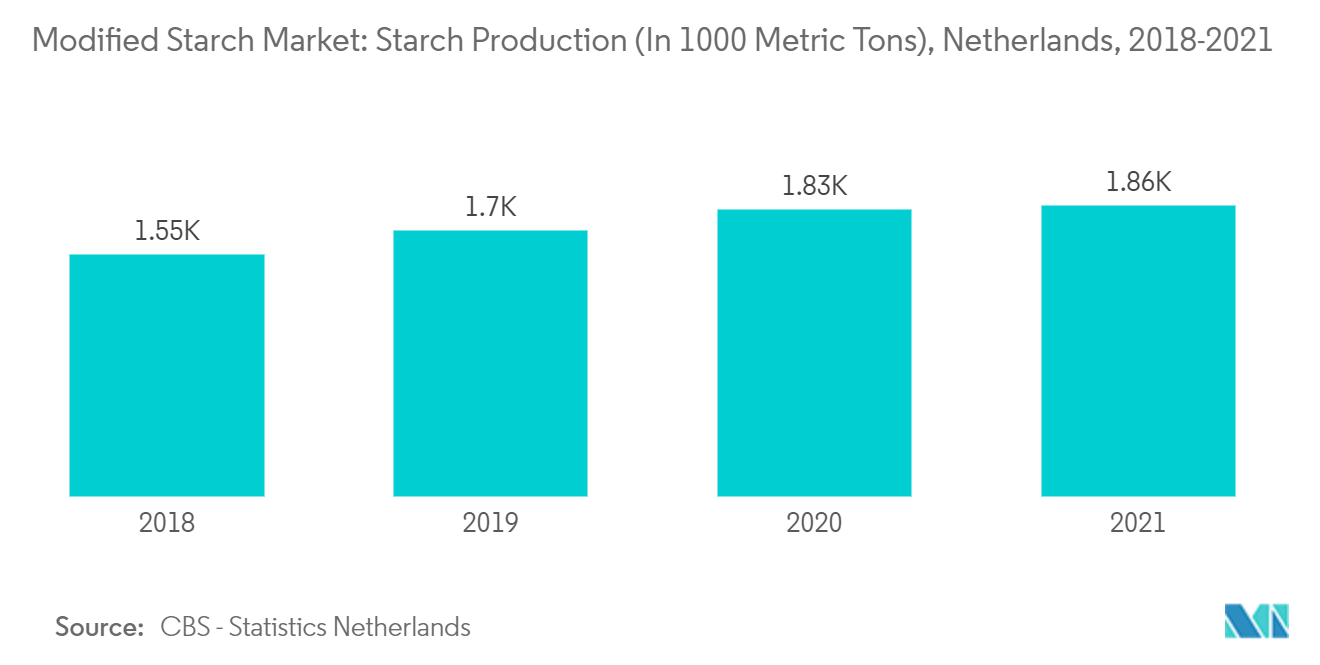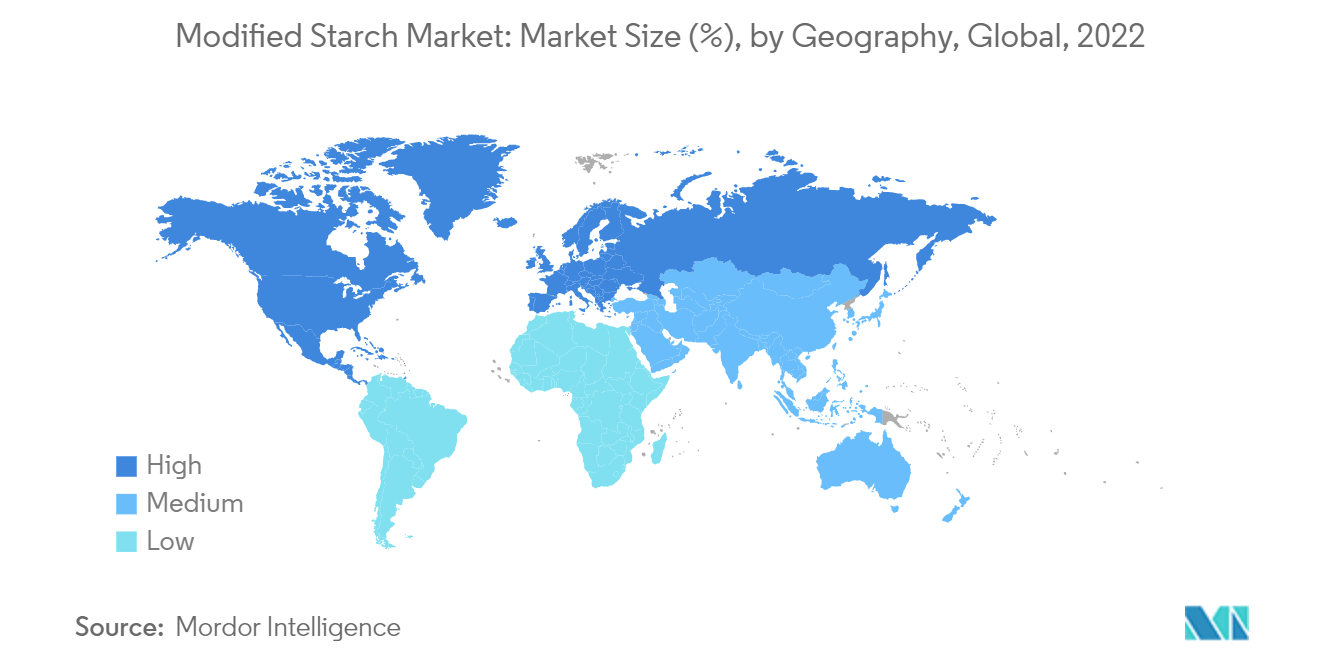Market Trends of Modified Starch Industry
Increasing Investments in the Starch Market to Strengthen the Growth
- Investments in the starch market are expanding production capacity, which can meet the growing demand for modified starches in various industries. With increased production, manufacturers can take advantage of economies of scale and reduce their costs, resulting in higher profit margins and increased market share.
- For instance, in February 2021, Tate & Lyle PLC completed the acquisition of an 85% shareholding in Chaodee Modified Starch Co. Ltd ('CMS'), a well-established tapioca-modified food starch manufacturer based in Thailand. The investment extended Tate & Lyle's presence in specialty tapioca-based restaurants and established a dedicated production facility in the main tapioca-producing region of Eastern Thailand.
- Ingredient suppliers have been diversifying their starch sources, while starch innovations are centered on elements within baked foods, including sauces in frozen food meals and fruit filling in desserts. According to the European Starch Industry Association (ESIA), The European Starch Industry currently produces more than 11 million tonnes of starch and starch derivatives, as well as more than 5 million tonnes of proteins and fibers annually, from 71 starch-producing facilities in 20 member nations of the European Union (EU). This is mainly extracted from 25 million tones of EU-grown wheat, maize, and potatoes, but also from barley, rice, and peas. EU starch production increased from 8.7 million tonnes in 2004 to over 11 million tonnes in 2021.
- More importantly, a growing number of starch manufacturers have been investing in the starch and sweeteners market in Europe to support the local economy and community while positioning the business for long-term growth. Increasing investments in the starch market can support growth by expanding production capacity, developing innovative products, optimizing the supply chain, and strengthening the brand image and customer relationships. Therefore, the rising investment in modified starch production to cater to the surging demand is expected to bolster the market's growth during the forecast period.

Asia-Pacific Remains the Fastest Growing Region
- The application of modified starch in varied applications is widely contributing to the growth in the Asia-Pacific region. It aids in thickening or stabilizing food products, especially sauces. Thus, with the rising market for sauces and condiments, the industrial starches market is also growing at a faster pace. The booming manufacturing sectors, ranging from textiles to the cosmetics industry, have been pushing the demand for starch in the region. The food industry is one of the major consumers of modified starches in the Asia Pacific region.
- The demand for modified starches in this sector is driven by the increasing demand for processed foods, convenience foods, and functional foods, which require high-quality modified starches as ingredients. The rapidly growing processed food industry and the consumer shift toward snacking have been driving the modified starch market in countries like China and India. The food industry is the most lucrative segment considering liberalized regulations toward using modified starch in food production.
- Government policies supporting the use of modified starches in various industries, particularly in the food and beverage sector, are driving the growth of the modified starch market in the Asia Pacific region. These policies are aimed at promoting the use of natural and healthy ingredients in food products and ensuring food safety.
- The evolving retail landscape, along with the involvement of numerous global and local players producing prepared food, is also projected to boost the demand in the modified starches market in the region.


